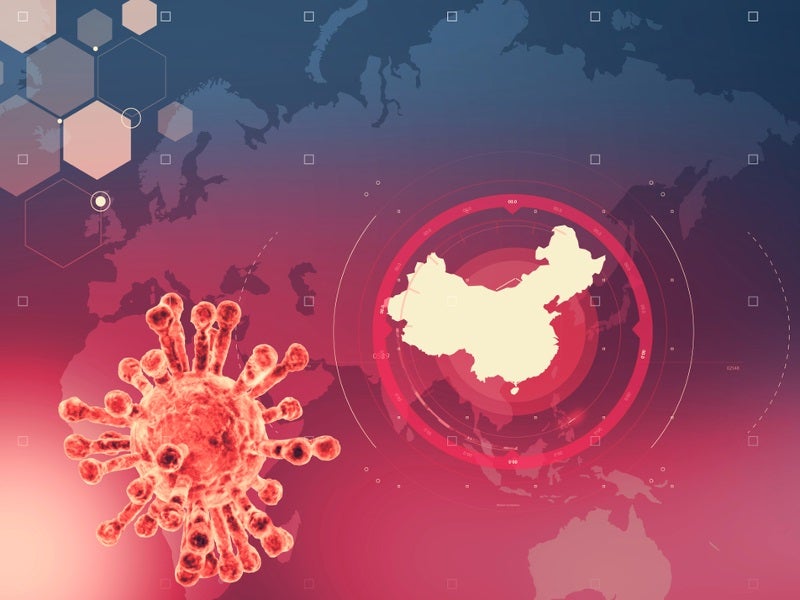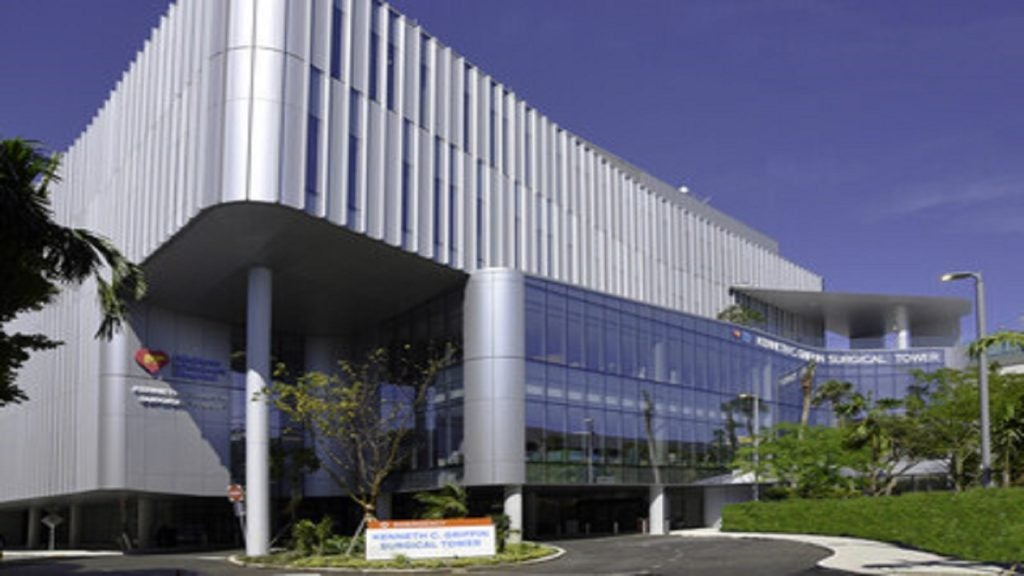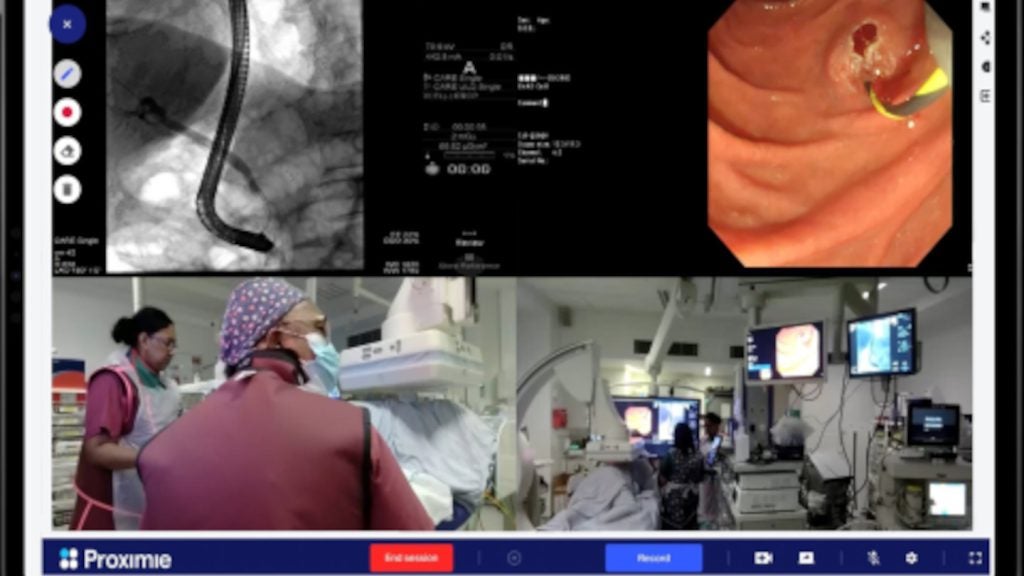
Visit our Covid-19 microsite for the latest coronavirus news, analysis and updates
Follow the latest updates on coronavirus outbreak:
Coronavirus outbreak: Full list of the affected countries
Coronavirus-affected countries: South Korea Japan Singapore Malaysia UK Thailand Philippines India
Countries with suspected coronavirus cases
Coronavirus timeline of events and latest updates
How well do you really know your competitors?
Access the most comprehensive Company Profiles on the market, powered by GlobalData. Save hours of research. Gain competitive edge.

Thank you!
Your download email will arrive shortly
Not ready to buy yet? Download a free sample
We are confident about the unique quality of our Company Profiles. However, we want you to make the most beneficial decision for your business, so we offer a free sample that you can download by submitting the below form
By GlobalDataCoronavirus safety measures at world airports
Majority of the deaths caused by the epidemic have been in China among all the countries affected by coronavirus. The first death outside Mainland China occurred in the Philippines soon followed by Hong Kong, Japan, France and Taiwan.
Chinese President Xi Jinping noted that the impact of the outbreak on the country’s economy is manageable and advised on the orderly resumption of work on 24 February. He noted that each region in the country should adopt a precise approach keeping in mind the health and safety risks involved.
The highest number of cases in China is in the Hubei province, where the virus is believed to have originated. Within Hubei, the city of Wuhan accounts for the highest number of confirmed cases, followed by Zhejiang, Guangdong, and Hunan.
Hubei also reported the highest percentage of deaths as well as the highest percentage of cured patients, among all the coronavirus affected areas in the country. For the first time since the outbreak, the province reported single-digit new confirmed cases on 28 February.
To contain the spread of the disease, China temporarily suspended air, road, and rail travel in and out of Wuhan and neighbouring provinces. These restrictions were also placed for airlines based in Hong Kong, Macau, and Taiwan.
Quarantine imposed on coronavirus affected countries
Health officials in Beijing have announced a 14-day self-quarantine for persons entering the country from the coronavirus affected countries. The measures were announced to prevent new outbreaks in the country.
For the first time since the outbreak, new cases reported in China on 26 February were lower than those reported outside the country.
Number of new infections decline
China reported a decline in the number of new cases reported for the first time since the outbreak on 18 February. The number of recovered patients at 1,824 surpassed the number of new confirmed cases at 1,749.
Anthony S. Fauci, immunologist and director of the National Institute of Allergy and Infectious Diseases, noted that it was too early to determine whether the cases declined.
However, during March, new coronavirus cases reported in China significantly declined.
Restrictions in Xiaogan city – the second-worst affected city in China
People in the Xiaogan city of Hubei province of China were banned from leaving their homes in an effort to contain the spread of the disease. The Xiaogan city was the second city to report the highest number of cases after Wuhan. As of 27 February, 3,516 confirmed cases and 113 deaths were reported in the city.
The Xiaogan city is home to more than four million people who will have to remain in their homes or face ten days in detention, if the restrictions are not followed. All vehicles were banned from roads and public events have been cancelled. Medical workers and people transporting essential goods were, however, exempt from the restrictions. Few supermarkets and pharmacies remained open during the ban.
Travel restrictions imposed on Chinese tourists and visitors
Most of the countries across the globe closed their borders with China, while some have cut direct transportation links.
The World Health Organisation (WHO) had advised against imposing any travel or trade restrictions on China.
Countries that restricted or banned Chinese tourists or visitors
The US issued the highest level of travel advisory (level 4) on 2 February 2020 and advised its citizens not to travel to China. It also urged US citizens in China to depart by commercial means or stay home as much as possible while avoiding contact with others.
Australia announced enhanced border control measures on 1 February 2020 to contain the spread of the virus. All arriving passengers are subjected to enhanced screening measures and passengers departing China from 1 February 2020 are denied entry into the country. The travel excludes Australian citizens, permanent residents, and their immediate family members.
New Zealand issued temporary travel restrictions into the country for all foreign nationals arriving from China. The restrictions have been placed for up to 14 days and are planned to be reviewed every 48 hours.
Maldives announced new border security measures on 3 February 2020 to restrict the entry of all passengers excluding Maldivian citizens from China or those who have transited through China. The country also warned Maldivians against non-essential travel to China and other countries affected by the virus.
Indonesia, Israel, Iraq, Italy, Guatemala, El Salvador Oman, Saudi Arabia, Russia, Japan, Vietnam, Singapore, and Pakistan are some of the other countries that either imposed travel restrictions or cancelled direct flights to China.
By March, most of the countries around the world advised citizens to refrain from travelling to China until the situation returns to normalcy.
How China is responding to the novel coronavirus outbreak
China took immediate measures to contain the spread of the virus and provide diagnosis and treatment in-time to reduce the impact.
On 23 January, the Chinese Civil Aviation Administration guided foreign airlines to reduce their scheduled flights to Wuhan, when necessary, to prevent and control the spread of pneumonia caused by coronavirus.
The government took a number of measures to contain the outbreak, as listed below:
- Pooling trained medical personnel from across the country
- Ensuring supplies to the most vulnerable and affected areas
- Construction of new temporary coronavirus hospitals on a war-footing
- Extending holidays for schools and businesses as well as the Chinese Lunar New Year holiday
Cancellation/postponement of events
The Shanghai Fashion Week scheduled to be held between 26 March to 2 April has been cancelled by the organisers due to the COVID-19 outbreak.
Juss Sports Group, promoter of the 2020 Chinese Grand Prix, requested the postponement of the event scheduled to be held between 17 April and 19 April due to health concerns related to COVID-19. Formula One (F1) and Fédération Internationale de l’Automobile (FIA) have accepted the request.
Another major event expected to be affected was the Chinese Grand Prix, a key part of F1’s calendar.
Preventive measures at Chinese airports
Anticipating huge passenger movements on the occasion of the Spring Festival, China closed the outbound traffic from Wuhan, on 25 January, at a time when the coronavirus spread was anticipated to intensify.
Screening was started at most airports with flights arriving from Wuhan and other affected areas to admit passengers with associated symptoms for observation, diagnosis, and care.
Building hospitals for coronavirus care and treatment
China pre-poned the opening of the Dabie Mountain Regional Medical Centre, a 1,000-bed hospital, by expediting its construction and opened it on 29 January to quarantine people with coronavirus symptoms. It also opened a second quarantine hospital named Leishenshan hospital in Wuhan with 1,500 beds.
A new 1,000-bed hospital, named Huoshenshan hospital, was completed in record ten days to provide enhanced care and treatment to coronavirus patients. The new makeshift hospital was opened for admitting patients on 03 February.
China, further, decided to convert 11 venues, across Wuhan city, including gymnasiums, exhibition centres and sports centres into make-shift hospitals with more than 10,000 beds to treat patients with mild symptoms. Eight additional venues were announced to be converted into hospitals. The first three venues were converted on 03 February providing 3,400 beds to treat patients.
In addition, mobile hospitals and nurses were deployed from across the country to Wuhan to treat patients with mild symptoms.
An infectious disease hospital was also built in Zhengzhou, Henan Province.
Faster diagnosis and vaccine/drug development efforts
Wuhan Institute of Virology of the Chinese Academy of Sciences developed two diagnostic kits for the novel coronavirus antibody in association with a biopharmaceutical company.
Using an optimised testing method developed by Zhongnan Hospital of Wuhan University, the infection is being diagnosed in just two hours or more, which helped to start treatment quicker and improve recoveries.
The National Medical Products Administration also approved two diagnostic kits and a testing system developed by Hubei-based biopharmaceutical companies on 26 January.
Meanwhile, vaccine development efforts are progressing, with chemical compounds found to be effective in restraining the viral activity that will help expedite the drug development for the novel coronavirus.
Wuhan Jinyintan Hospital was the first to use Kaletra (lopinavir/ritonavir), a HIV/AIDS drug, to treat the novel coronavirus patients and note that it’s working.
The Chinese Academy of Sciences offered Chinese researchers open and free access to the China Science and Technology Cloud (CSTC) resources and services to assist in their research of the 2019-nCoV. Researchers will gain access to high-performance computing and software and other resources to facilitate interaction with co-researchers.
Baidu Research has allowed gene testing agencies, epidemic control centres and research institutions to use LinearFold, its RNA structure algorithm that will help to understand the virus and screening compounds in less than half-a-minute compared to approximately an hour earlier.
Ban on sale of fever and cough medications
China banned the sale of fever and cough medicine in certain provinces to encourage people to seek medical attention in hospitals rather than self-medicating. Pharmacies across Nanjing and Hangzhou announced ban on the sale of medicines, reported CNN.
Pharmacies in Beijing were instructed to register all customers who purchase fever and cough medicine including their names, addresses, ID card numbers and contact information apart from their symptoms, as reported by state-run news agency Xinhua.
Coronavirus impact on China
The coronavirus outbreak resulted in closures of multiple air, rail and road routes, as well as production cuts and temporary closures of manufacturing plants, which are expected to shave-off billions of dollars from China’s GDP.
Big companies such as Apple closed stores and manufacturing temporarily, while big telecom companies such as Huawei suspended travel to and from China.
China’s National Bureau of Statistics (NBS) announced that the purchasing managers’ index (PMI) for China’s manufacturing sector was 35.7 in February. The PMI declined from 50 in January due to the coronavirus outbreak. A PMI above 50 indicates expansion, while a rating below 50 indicates contraction.
The rating was based on a survey of 21 industries of the manufacturing sector, all of which registered a contraction. The impact of the coronavirus outbreak, however, varied for different industries.
PMI for chemicals and automobiles was below 30, while for food and beverages it was above 42.
Impact on industries
Some of the industries that are expected to be hit by the coronavirus in China are travel and tourism, shipping, pharmaceutical, automobile, electronics, and manufacturing. Supply chain disruptions are expected to affect a number of associated industries and markets.
Data from the China Association of Automobile Manufacturers (CAAM) revealed that auto sales declined by 18% in January, as reported by Reuters. The outbreak is expected to affect both sales and production in the short term due to the extension of holidays and shortage of workers and auto parts. The CAAM also predicted that competition would intensify in the industry and that suppliers of smaller parts may collapse.
The Hubei province is a major car manufacturing hub for several companies including Dongfeng Motor Group, Honda Motor, Renault SA and Peugeot SA. All the companies announced that they will be delaying the restart of production.
Companies that operate plants outside Hubei including Tesla, Volkswagen, and General Motors also announced that their factories would be closed for few weeks.
Major companies that have announced a business impact in the coronavirus affected country are Nike, Hyundai, Starbucks, Tata Motors, McDonald’s, Disney, Carlsberg, and H&M, as reported by Reuters and CNBC.
Airbus closed its final assembly line in Tianjin on 05 February.
Kering, owned by Gucci, announced the temporary closure of half of its stores in China on 12 February owing to the COVID-19 outbreak, reported Reuters.
Impact on the pharmaceutical industry and supply chain
The Chinese pharmaceutical industry is expected to be adversely impacted by the coronavirus on the supply chain side. China accounts for 13% of the active pharmaceutical ingredients manufactured for the US market, according to the FDA, while India accounts for a higher 18%.
Production and logistics delays could cost the Chinese API manufacturers high if the Indian competitors scale-up quickly.
Coronavirus impact on the Chinese economy
China has enjoyed an average GDP growth rate of 10% in the last 40 years, but the growth rate has been southwards in the recent years due to multiple reasons, especially structural constraints.
Coronavirus has hit at a time when the Chinese economy is slowing down and the nation is struggling to identify new growth drivers amid trade tensions with the US.
The World Bank estimated China to record a lower 6.1% growth rate in 2019 and forecast the economic growth to dip below 6% in 2020 and moderate further in 2021.
The coronavirus is expected to result in a further slow down because of its impact on the country’s trade and effect on a wide range of industries.
OECD’s initial estimates pegged China’s economic growth in 2020 to dip below 5%.
Measures China is taking to minimise the economic impact of coronavirus
China has already taken a number of fiscal measures to reduce the impact of the coronavirus, although the impact on Q1 is imminent and further impact is subject to bringing the epidemic under control.
Fiscal measures: Liquidity infusion and tariff cuts
The People’s Bank of China (PBOC) announced plans to perform reverse repurchase operations worth RMB1.2tn ($173bn) to ensure adequate liquidity supply in the economy.
The existing liquidity in the banking system is RMB900bn ($129bn), more than that recorded during the same period in the previous year.
The central bank infused 1.7 trillion yuan already into the banking system via repos and repo rate cuts as of 10 February.
China is also likely to announce tariff cuts on essential goods imported from major countries such as the US, to ensure supplies, despite the recent trade war between the two nations.
Further, Chinese provinces and municipalites are taking multiple supportive measures to support businesses, as below:
- Tax and rent deductions to businesses
- Delaying loan payments
- Reducing interest rates
- Waiving overdue interest on loans
- Offering fresh loans to companies having low liquidity
Non-fiscal measures
The government also focused on minimising the epidemic spread and safeguarding the lives of its residents to minimise the death toll.
The Chinese Ministry of Commerce is ensuring to maintain enough supplies of meat, pork and other essential food products, to avoid shortage.
In the upcoming times, the nation is expected to initiate more non-fiscal measures to reduce the economic impact.







